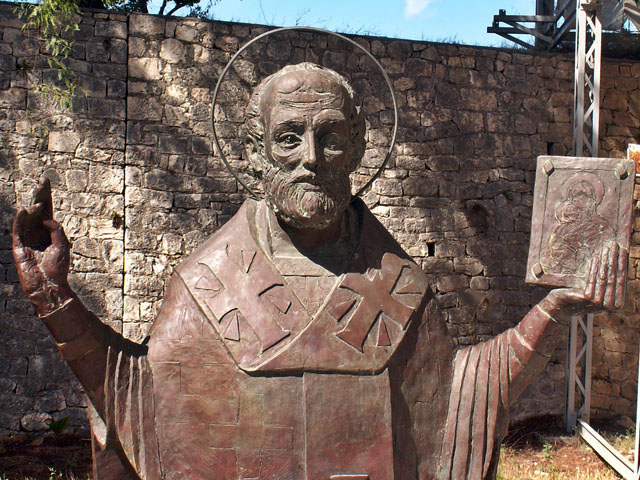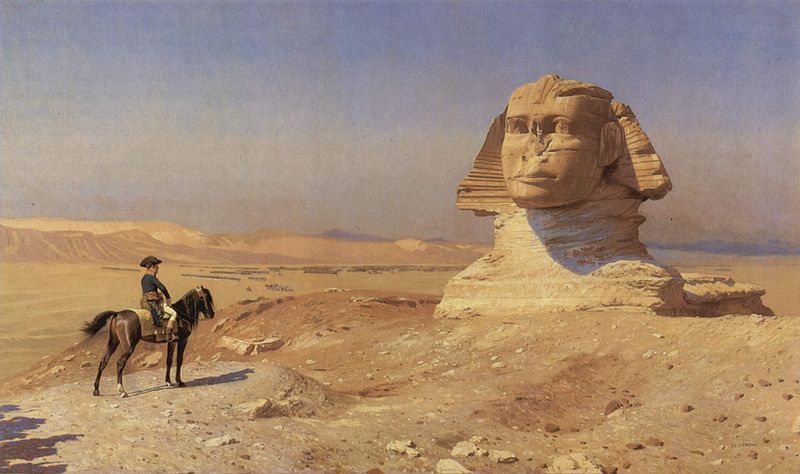
At Christmas time in year four of primary school, I was officially crowned the most unpopular pupil in class. The reason for earning this rather dubious title, is that in response to my teacher’s question as to whether we were cognizant of the identity of Santa Claus, I stated: “Yeah, I know, he was an old Greek priest who lived two thousand years ago. He is now dead.” It was this last sentence that caused immense consternation among my fellow pupils, as well as my teacher, who stoutly refused to accept, albeit belatedly, news of the said prelate’s demise. This in turn caused me no end of persecution in the playground, even when I attempted to mollify the unjustified rage of my peers by offering that according to scientific research, the historical Santa Claus was barely five feet in height and had a broken nose. Not for them the tantalising historical titbit that holds Saint Nicholas to be the only canonised repeated subject of a vast array of musical works, including, San Nicola di Bari, an oratorio composed by Bononcini in 1683, Saint Nicholas, a song composed by the English great Edward Purcell in 1730 and of course, an opera entitled ‘Saint Nicholas arrives,’ ingeniously conjured onto the stave by Salesian priest Jerko Grzincic. Truly, the only way in which my painstakingly packed lunch escaped the precipitous fate of defenestration was by my successful diversion of my pursuers by telling them one of the many traditions associated with their Saint. Apparently, in 311AD, there was a famine in Myra, the city of which Nicholas was a bishop. Here a quantity of slapping was inflicted upon my personage, for according to my assailants Santa lives in the North Pole and has reindeer and elves, not Myrans. Undaunted, I went on to relate how Saint Nicholas asked some sailors in the harbour who were loading wheat to take to the Emperor in Constantinople, to unload a part of their cargo to feed the starving city-dwellers. When the sailors reluctantly complied with his request, they found that weight of the load had not changed, while the wheat unloaded for the town was enough to feed the populace for two years.
As can by now be gathered, for reasons unexplained, Saint Nicholas, who by elision and corruption of his Greek name to Santa Claus, is not for the Greek people, the magical person who appears on Christmas Eve, in order to distribute gifts to children. For us, the gift giver is Saint Basil, bishop of Caesarea, who in typically Greek fashion, arrives a week later than everyone else, on New Year’s Eve. Unlike the western version of Saint Nicholas, no mention of children being naughty or nice is made as a pre-requisite to being the recipients of a gift; Saint Basil seems to disperse his largesse indiscriminately. Saint Nicholas however, also was a gift giver, notably providing dowries for poor girls in secret and this tradition may provide the germ of the legend that was to follow.
As bishop, Saint Nicholas was instrumental in articulating the orthodox tenets of Christianity in the First Council of Nicaea. As the patron saint of sailors, he is one of the most revered saints in the Orthodox Church. He was buried at Myra in Asia Minor and after the Turkish invasion of Asia Minor, sailors from the Italian city of Bari confiscated half of his remains in 1087 and installed them in their city, where they remain today.
Possibly not for long. According to Turkish professor Navzat Cevik, Saint Nicholas’ relics must be ‘returned’ to Turkey. An archaeologist at the Akdeniz University, he absurdly claims that is Saint Nicholas’ final wish. Adding insult to brazenness, he adds that Saint Nicolas, known as Noel Baba in Turkish, is also an important figure for Muslims, as “he tried spreading Christianity which is a religion spread by God.”
Cevik’s ludicrous claim would be amusing if it were not for the fact that it discloses a little known fact about Turkey. Its government controls access to sites of religious significance to Christians, refuses to return them to their rightful owners and even abrogates to itself the right to determine when or if religious services can be held in such sites. Saint Nicholas’ church in Myra is a case on point, as is Soumela Monastery in Pontus. Only a few months ago, the Patriarchate was compelled to buy back one of its own churches, forcibly confiscated from it in the aftermath of the 1922 disaster; the 8th century Taxiarxon Church in Bursa, to save it from demolition. It is only recently and in response to the mass influx of Russian pilgrims to Orthodox holy sites throughout Asia Minor that priests belonging to the Ecumenical Patriarchate have been permitted to perform services in such sites, as they have done so continuously for two thousand years.
Despite being so “important” to Islam, priests were only permitted to perform the Divine Liturgy in the saint’s majestic ruined church in 2007. By way of further elucidation as to how seriously the Turkish authorities take the religious aspect of Saint Nicholas’ resting place, as opposed to the commercial opportunities it provides for local Turks, the following anecdote is illustrative to say the least: In 2000, the Russian government donated a bronze statue of Saint Nicholas, portraying him as a Byzantine saint in full hierarchical vestments to the town of Myra, now Demre. This statue was set up on a high pedestal in front of the ruins of the church of Saint Nicholas. In 2005 however, the mayor of the town Süleyman Topçu had the statue replaced by a red-suited plastic Santa Claus statue, because he wanted an image more recognisable to foreign visitors. Protests from the Russian government against this were successful, and the bronze statue was returned, albeit without its original high pedestal, to an obscure corner near the church. This then is how the religious sensitivities of the Turkish authorities for their Christian minorities manifest themselves.
Even more illuminating is this quote from Turkish Environment and Urbanism Minister Erdoğan Bayraktar at a recent conference hosted by the ruling Justice and Development Party's Women's Group: “Christianity has ceased to be a religion but has become a culture of its own… That is what they want to turn [Islam] into as well.”
Saint Nicholas was Greek. His church in Myra is surrounded by deserted villages, whose crumbling into the dusts of oblivion bears mute witness to the three thousand year old Greek community that inhabited the region of Lycia until its expulsion in 1922. The victims of this extirpation and their descendants have no hope of returning to their ancestral homes – that much we can accept. What we cannot accept however, is for a government that has no spiritual, religious, cultural or ethnic claims to important foundations of our history and identity, cynically appropriating such elements solely for their own material gain.
Navzat Cevik addressed his demand for the return of Saint Nicholas’ relics to the Vatican. Granted, the translation of those relics was tantamount to theft, as it was perpetrated in the face of opposition from the Orthodox monks who were guarding them. According to historical sources, the relic theft was premeditated, like the similar theft of Saint Mark’s relics from Alexandria by the Venetians. Accosted by the monks, the thieves of Bari consoled them: “Look you, that we have not disembarked here of our own will, but we have been sent by the Pope and by the Archbishops and Bishops and authorities at Rome.”
It is just as well that they did, for they saved the relics from the ignominy of desecration. As late as 1955, during the Constantinople pogrom, Turks, in a government-organised campaign, shattered the tombs of our patriarchs, removed their bones and paraded them down the street. These then are the people who trade in the religious relics of their down-trodden, disenfranchised and on the brink of extinction religious minorities. The Vatican is right not to respond to Cevik’s effluvium of bad taste. We on the other hand, cannot conceal our hurt at the manner in which our prospective European partner treats its religious minorities with less respect than that afforded to them during Ottoman times.
Mark well, Professor Cevik. When Saint Basil comes back to Cappadocia, as he does every New Year, holding pen and paper, he is making a list of your faux pas and unacademic, unhistorical statements. And should you demand the restitution of his relics to Caesarea, the see of his bishopric, hedging your bets either way to ensure you maintain a monopoly over all Father Christmases, they are in the Great Lavra at Mount Athos. Just you try to get them.
DEAN KALIMNIOU
First published in NKEE on Saturday 12 January 2013



